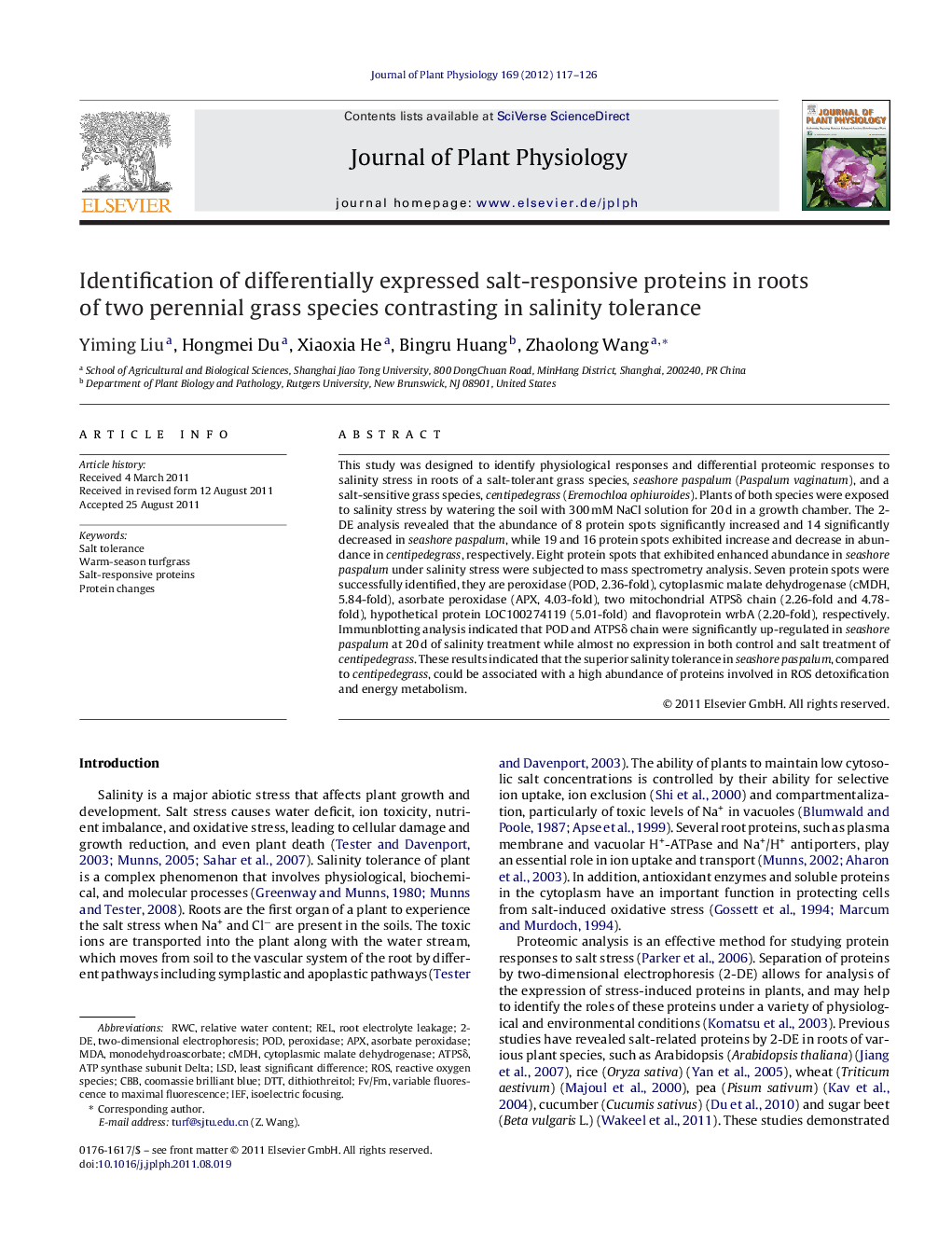| Article ID | Journal | Published Year | Pages | File Type |
|---|---|---|---|---|
| 2056264 | Journal of Plant Physiology | 2012 | 10 Pages |
This study was designed to identify physiological responses and differential proteomic responses to salinity stress in roots of a salt-tolerant grass species, seashore paspalum (Paspalum vaginatum), and a salt-sensitive grass species, centipedegrass (Eremochloa ophiuroides). Plants of both species were exposed to salinity stress by watering the soil with 300 mM NaCl solution for 20 d in a growth chamber. The 2-DE analysis revealed that the abundance of 8 protein spots significantly increased and 14 significantly decreased in seashore paspalum, while 19 and 16 protein spots exhibited increase and decrease in abundance in centipedegrass, respectively. Eight protein spots that exhibited enhanced abundance in seashore paspalum under salinity stress were subjected to mass spectrometry analysis. Seven protein spots were successfully identified, they are peroxidase (POD, 2.36-fold), cytoplasmic malate dehydrogenase (cMDH, 5.84-fold), asorbate peroxidase (APX, 4.03-fold), two mitochondrial ATPSδ chain (2.26-fold and 4.78-fold), hypothetical protein LOC100274119 (5.01-fold) and flavoprotein wrbA (2.20-fold), respectively. Immunblotting analysis indicated that POD and ATPSδ chain were significantly up-regulated in seashore paspalum at 20 d of salinity treatment while almost no expression in both control and salt treatment of centipedegrass. These results indicated that the superior salinity tolerance in seashore paspalum, compared to centipedegrass, could be associated with a high abundance of proteins involved in ROS detoxification and energy metabolism.
